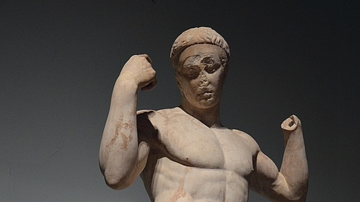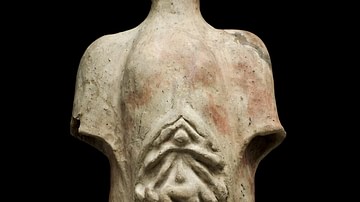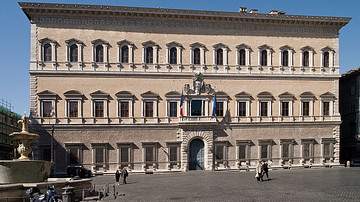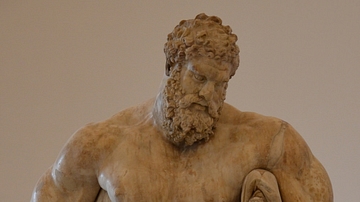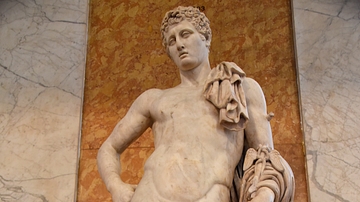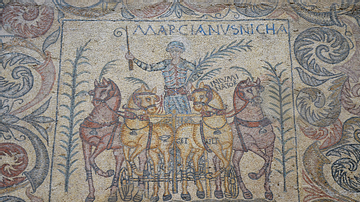Illustration
The statue shows a young athlete tying a ribbon around his head, signifying that he has just won a competition. Which event the youth won is unknown but athletic figures of this type were a common theme in Greek art. A victor statue by the sculptor Pheidias of a boy binding a ribbon around his head was dedicated at Olympia, according to ancient writers. This marble statue is thought to be a later Roman version of that original Greek bronze figure, now lost. The palm tree trunk was not part of the Greek original, but palm fronds symbolized sporting victory. Roman, mid-1st century CE, probably a version of a Greek original of about 430 BCE. Formerly in the Farnese Collection, Naples; known as the Farnese Diadoumenos (ribbon-wearer). The British Museum, London.
About the Author
Cite This Work
APA Style
Amin, O. S. M. (2016, May 22). Victorious Young Athlete, the Farnese Diadoumenos. World History Encyclopedia. Retrieved from https://www.worldhistory.org/image/5098/victorious-young-athlete-the-farnese-diadoumenos/
Chicago Style
Amin, Osama Shukir Muhammed. "Victorious Young Athlete, the Farnese Diadoumenos." World History Encyclopedia. Last modified May 22, 2016. https://www.worldhistory.org/image/5098/victorious-young-athlete-the-farnese-diadoumenos/.
MLA Style
Amin, Osama Shukir Muhammed. "Victorious Young Athlete, the Farnese Diadoumenos." World History Encyclopedia. World History Encyclopedia, 22 May 2016. Web. 15 Apr 2025.



